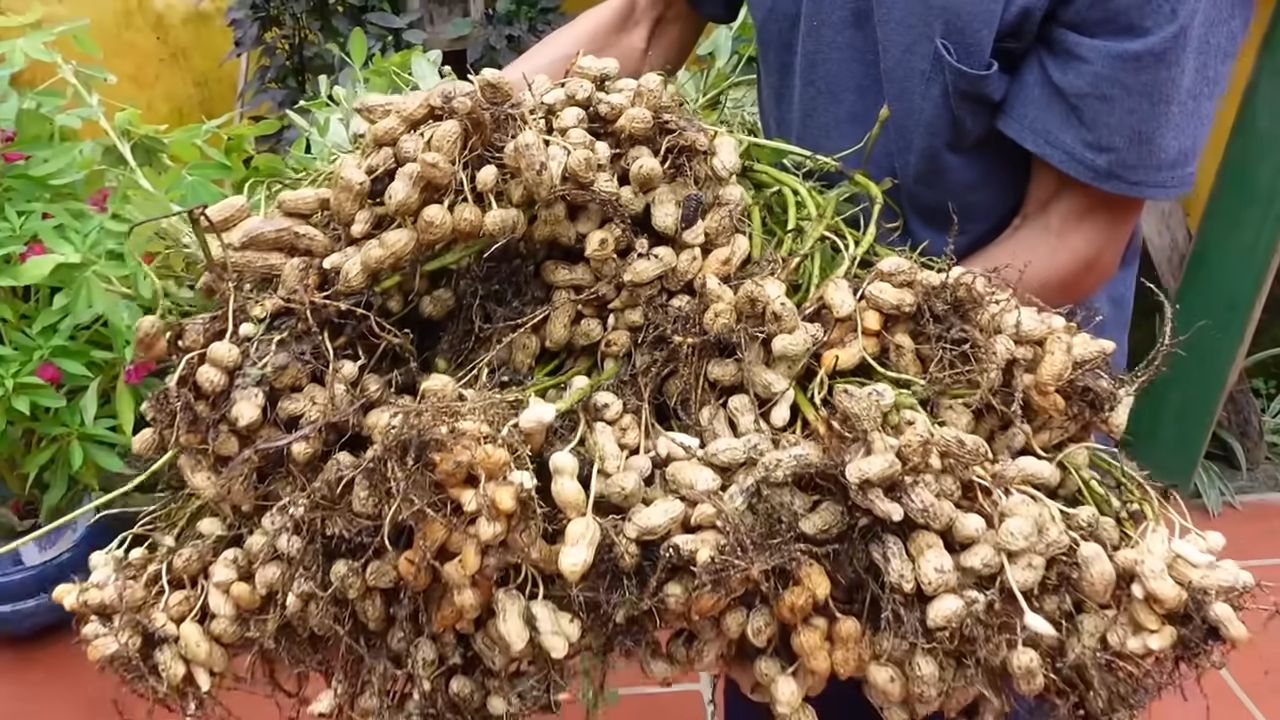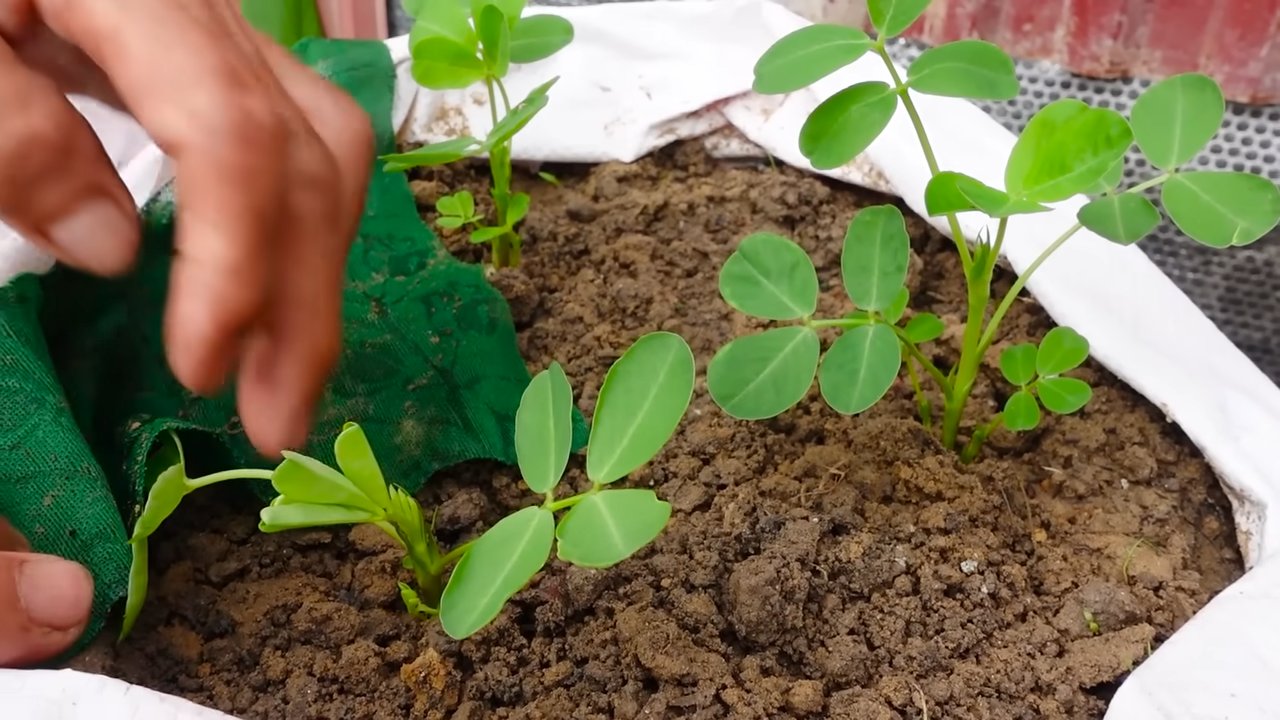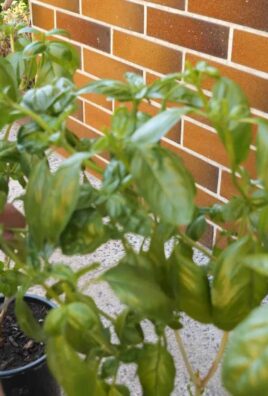Growing peanuts can seem like a daunting task, especially if you’re a beginner gardener. But trust me, it’s more achievable (and rewarding!) than you might think. Have you ever imagined harvesting your own homegrown peanuts, fresh from the earth, ready to be roasted or turned into delicious peanut butter? This DIY guide will unlock the secrets to successfully cultivating these tasty legumes, even if you’ve never grown anything beyond a windowsill herb garden.
Peanuts, also known as groundnuts, have a rich history, dating back thousands of years to South America. They were a staple food for indigenous populations and eventually spread across the globe, becoming a beloved snack and ingredient in countless cuisines. In many cultures, peanuts symbolize prosperity and good fortune.
Why should you embark on this growing peanuts adventure? Well, store-bought peanuts simply can’t compare to the flavor of freshly harvested, homegrown ones. Plus, growing your own food is incredibly satisfying and empowering. This DIY guide will provide you with simple, step-by-step instructions, insider tips, and troubleshooting advice to ensure your peanut-growing journey is a success. We’ll cover everything from selecting the right peanut variety to harvesting your bountiful crop. Get ready to dig in and discover the joy of growing your own peanuts!

Growing Peanuts: From Seed to Snack in Your Own Backyard!
Okay, peanut lovers, gather ’round! I’m going to walk you through the surprisingly simple process of growing your own peanuts. Forget the store-bought stuff – there’s nothing quite like the taste of freshly harvested, homegrown peanuts. Trust me, it’s a rewarding experience, and even beginners can get a great harvest with a little patience and these tips.
Choosing the Right Peanut Variety
Before we get our hands dirty, let’s talk peanuts! Not all peanuts are created equal, and choosing the right variety for your climate is crucial. Here’s a quick rundown:
* Virginia Peanuts: These are the big boys, the ones you often see roasted in the shell. They need a long growing season (120-130 days), so they’re best suited for warmer climates.
* Spanish Peanuts: Smaller and rounder, Spanish peanuts have a reddish-brown skin and a higher oil content. They mature a bit faster (around 110 days) and are more tolerant of cooler temperatures than Virginia peanuts.
* Runner Peanuts: These are the most commonly grown peanuts in the US, often used for peanut butter. They have a good yield and mature in about 120 days.
* Valencia Peanuts: These are sweet and have three or four kernels per shell. They mature quickly (90-110 days) and are a good choice for shorter growing seasons.
My Recommendation: If you’re a beginner, I’d suggest starting with Spanish or Valencia peanuts. They’re more forgiving and mature faster, giving you quicker results and boosting your confidence! Check your local nursery or online seed suppliers to find the best variety for your region.
Preparing Your Peanut Patch
Peanuts are surprisingly picky about their soil. They need well-drained, sandy loam soil with a slightly acidic pH (around 6.0-6.5). Here’s how to get your soil ready:
* Sunlight: Peanuts need at least 6-8 hours of direct sunlight per day. Choose a sunny spot in your yard.
* Soil Testing: A soil test is your best friend! It will tell you the pH and nutrient levels of your soil. You can usually get a soil test kit from your local extension office or garden center.
* Amending the Soil: Based on your soil test results, amend the soil accordingly.
* If your soil is too acidic, add lime to raise the pH.
* If your soil is too alkaline, add sulfur to lower the pH.
* Add compost or well-rotted manure to improve drainage and fertility. Peanuts don’t need a ton of nitrogen, so don’t overdo it with nitrogen-rich fertilizers.
* Tilling or Digging: Loosen the soil to a depth of at least 12 inches. This will make it easier for the peanut pegs (the stems that grow down into the soil and form the peanuts) to penetrate the ground.
* Weed Control: Peanuts don’t compete well with weeds, so make sure your planting area is weed-free. You can use a hoe or hand-pull weeds. Consider using a layer of organic mulch (like straw or shredded leaves) to suppress weed growth.
Planting Your Peanuts
Now for the fun part! Here’s how to get those peanut seeds in the ground:
1. Timing is Key: Wait until the soil temperature is consistently above 65°F (18°C) before planting. This is usually a couple of weeks after the last frost.
2. Prepare the Seeds: You can plant peanuts in the shell or shelled. If you’re planting in the shell, gently crack the shell open just before planting. Be careful not to damage the peanut kernels inside.
3. Planting Depth and Spacing: Plant the peanut kernels about 1-2 inches deep and 6-8 inches apart in rows that are 2-3 feet apart.
4. Watering: Water the soil thoroughly after planting. Keep the soil consistently moist, but not waterlogged, until the seedlings emerge.
5. Mark Your Rows: Use stakes or row markers to keep track of where you planted your peanuts.
Caring for Your Peanut Plants
Once your peanut plants are up and growing, here’s how to keep them happy and healthy:
* Watering: Water regularly, especially during dry spells. Peanuts need about 1 inch of water per week. Avoid overhead watering, as this can promote fungal diseases. Soaker hoses or drip irrigation are ideal.
* Weed Control: Continue to keep the area around your peanut plants weed-free. Hand-pulling is usually the best option to avoid damaging the peanut plants.
* Hilling: About a month after the plants emerge, hill the soil around the base of the plants. This will encourage the pegs to penetrate the soil and form peanuts. You can repeat this process every few weeks.
* Fertilizing: Peanuts don’t need a lot of fertilizer, but you can give them a boost with a side dressing of a low-nitrogen fertilizer about a month after they emerge.
* Pest and Disease Control: Keep an eye out for pests like aphids, spider mites, and leafhoppers. You can usually control these pests with insecticidal soap or neem oil. Fungal diseases can be a problem in humid climates. Avoid overhead watering and ensure good air circulation to prevent fungal diseases. If you do see signs of disease, treat with a fungicide.
Harvesting Your Peanuts
This is the moment you’ve been waiting for! Here’s how to know when your peanuts are ready to harvest:
1. Timing: Peanuts are usually ready to harvest about 120-150 days after planting, depending on the variety.
2. Check the Leaves: The leaves will start to turn yellow and brown when the peanuts are ready to harvest.
3. Dig a Test Plant: Dig up a test plant and check the peanuts. The shells should be well-filled and the kernels should be plump and mature.
4. Harvesting: Use a garden fork or shovel to carefully dig up the peanut plants. Shake off as much soil as possible.
5. Drying: Hang the peanut plants upside down in a well-ventilated area for 2-4 weeks to dry. You can also spread the peanuts out on a screen or tarp to dry.
6. Threshing: Once the peanuts are dry, you can thresh them by hand or by using a threshing machine.
7. Curing: After threshing, cure the peanuts for another week or two in a cool, dry place. This will improve their flavor and shelf life.
Roasting Your Homegrown Peanuts
Now for the best part – enjoying the fruits (or should I say, nuts?) of your labor! Here’s how to roast your homegrown peanuts:
1. Preheat Your Oven: Preheat your oven to 350°F (175°C).
2. Prepare the Peanuts: Spread the peanuts out in a single layer on a baking sheet.
3. Roasting Time: Roast the peanuts for 20-25 minutes, or until they are golden brown and fragrant. Stir them occasionally to ensure even roasting.
4. Cooling: Let the peanuts cool completely before eating.
5. Enjoy! Enjoy your freshly roasted, homegrown peanuts! You can eat them plain, add them to salads, or use them to make peanut butter.
Troubleshooting Peanut Growing
Even with the best planning, things can sometimes go wrong. Here are a few common problems and how to fix them:
* Poor Germination: If your peanut seeds aren’t germinating, it could be due to cold soil, poor quality seeds, or overwatering. Make sure the soil temperature is above 65°F (18°C) before planting. Use fresh, high-quality seeds. Avoid overwatering the soil.
* Yellowing Leaves: Yellowing leaves can be a sign of nutrient deficiency, overwatering, or disease. Check your soil pH and nutrient levels. Make sure the soil is well-drained. Treat any diseases with a fungicide.
* Small Peanuts: Small peanuts can be caused by poor soil, lack of water, or pests. Amend the soil with compost or well-rotted manure. Water regularly, especially during dry spells. Control pests with insecticidal soap or neem oil.
* Pest Problems: Pests like aphids, spider mites, and leafhoppers can damage peanut plants. Control these pests with insecticidal soap or neem oil.
* Disease Problems: Fungal diseases can be a problem in humid climates. Avoid overhead watering and ensure good air circulation to prevent fungal diseases. If you do see signs of disease, treat with a fungicide.
Storing Your Peanuts
If you have more peanuts than you can eat

Conclusion
So, there you have it! Growing peanuts at home, while it might seem daunting at first, is an incredibly rewarding experience. It connects you to your food in a profound way, allowing you to nurture a plant from seed to delicious, homegrown snack. This DIY trick, this method of cultivating your own peanut patch, is a must-try for several reasons.
First and foremost, the taste difference is undeniable. Freshly harvested peanuts, whether roasted, boiled, or enjoyed raw (if properly cured), possess a flavor that far surpasses anything you can find in a store. The subtle sweetness and earthy notes are intensified, creating a truly unique culinary experience. Plus, you have complete control over the growing process, ensuring that your peanuts are free from unwanted pesticides and chemicals.
Beyond the superior taste, growing your own peanuts offers a fantastic learning opportunity. It’s a chance to understand the life cycle of a plant, the importance of soil health, and the delicate balance of nature. It’s an educational activity that can be enjoyed by the whole family, fostering a sense of responsibility and appreciation for the food we eat.
And let’s not forget the sheer satisfaction of harvesting your own crop! There’s nothing quite like digging into the soil and unearthing a treasure trove of peanuts, knowing that you nurtured them from tiny seeds. It’s a moment of pure joy and accomplishment.
Ready to take your peanut growing to the next level? Consider experimenting with different varieties of peanuts. Virginia peanuts are known for their large size and are excellent for roasting, while Spanish peanuts are smaller and sweeter, perfect for peanut butter. Runner peanuts are commonly used in commercial peanut butter production and are a good all-around choice. You can also try growing peanuts in containers if you have limited space. Just make sure to choose a large container with good drainage.
Don’t be afraid to get your hands dirty and embrace the challenge. Growing peanuts is a journey of discovery, and the rewards are well worth the effort. We encourage you to try this DIY trick and experience the joy of homegrown peanuts for yourself. And most importantly, share your experiences with us! Let us know what varieties you tried, what challenges you faced, and what successes you celebrated. Your insights can help other aspiring peanut growers and contribute to a thriving community of home gardeners. So, grab some seeds, prepare your soil, and get ready to embark on a peanut-growing adventure! You won’t regret it.
Frequently Asked Questions (FAQ)
What is the best time to plant peanuts?
The ideal time to plant peanuts is after the last frost, when the soil temperature has warmed to at least 65 degrees Fahrenheit (18 degrees Celsius). This typically falls in late spring or early summer, depending on your climate. Planting too early can lead to poor germination and stunted growth. A good rule of thumb is to plant when you would normally plant warm-season vegetables like tomatoes or peppers. Check your local weather forecasts and historical data to determine the average last frost date in your area.
How much space do peanuts need to grow?
Peanuts require ample space to spread and develop their underground pods. As a general guideline, space peanut plants 6-8 inches apart in rows that are 2-3 feet apart. This allows for adequate sunlight penetration, air circulation, and room for the plants to expand. If you’re growing peanuts in containers, choose a large pot that is at least 18 inches in diameter and 12 inches deep. Only plant one or two peanut plants per container to avoid overcrowding.
What kind of soil is best for growing peanuts?
Peanuts thrive in well-drained, sandy loam soil with a slightly acidic pH (around 6.0 to 6.5). Sandy loam soil provides good drainage, which is essential for preventing root rot and other fungal diseases. It also allows the developing peanut pods to easily penetrate the soil. If your soil is heavy clay, amend it with organic matter such as compost, peat moss, or aged manure to improve drainage and aeration. Avoid soils that are excessively alkaline or compacted.
How often should I water my peanut plants?
Peanut plants need consistent moisture, especially during the flowering and pod development stages. Water deeply and regularly, aiming to keep the soil consistently moist but not waterlogged. Avoid overhead watering, as this can promote fungal diseases. Instead, use a soaker hose or drip irrigation system to deliver water directly to the roots. The frequency of watering will depend on the weather conditions and the type of soil. Check the soil moisture regularly and water when the top inch feels dry to the touch.
What are some common pests and diseases that affect peanuts?
Peanuts can be susceptible to various pests and diseases, including aphids, spider mites, leafhoppers, nematodes, and fungal diseases like leaf spot and white mold. Regularly inspect your plants for signs of infestation or disease. If you spot any problems, take action promptly to prevent them from spreading. Use organic pest control methods such as insecticidal soap, neem oil, or beneficial insects to control pests. To prevent fungal diseases, ensure good air circulation, avoid overhead watering, and apply a fungicide if necessary. Crop rotation can also help to reduce the incidence of soilborne diseases.
How do I know when my peanuts are ready to harvest?
Determining the right time to harvest peanuts is crucial for optimal flavor and yield. The best indicator is the maturity of the pods. About 120-150 days after planting, dig up a few plants and check the pods. The inside of the shells should be dark brown or black, and the kernels should be plump and well-formed. If the shells are still white or light-colored, the peanuts are not yet mature. Another sign is the yellowing and browning of the foliage. Once the majority of the plants show these signs, it’s time to harvest.
What is the best way to harvest peanuts?
To harvest peanuts, carefully dig up the entire plant, including the roots and pods. Gently shake off any excess soil. If the soil is dry, you may need to loosen it with a garden fork before digging. Once you’ve harvested the plants, hang them upside down in a well-ventilated area to dry for several weeks. This allows the peanuts to cure and develop their full flavor. After the plants are dry, you can remove the peanuts from the vines.
How should I store my harvested peanuts?
Proper storage is essential for preserving the quality and flavor of your harvested peanuts. Store the peanuts in a cool, dry, and well-ventilated place. You can store them in burlap sacks, mesh bags, or airtight containers. Avoid storing them in plastic bags, as this can trap moisture and lead to mold growth. Properly stored peanuts can last for several months. You can also freeze peanuts for longer storage.
Can I grow peanuts in containers?
Yes, you can successfully grow peanuts in containers, especially if you have limited space. Choose a large container that is at least 18 inches in diameter and 12 inches deep. Make sure the container has good drainage holes. Fill the container with a well-draining potting mix. Plant one or two peanut plants per container. Water regularly and fertilize as needed. Place the container in a sunny location that receives at least 6-8 hours of sunlight per day.
What are some different ways to enjoy homegrown peanuts?
The possibilities are endless! You can roast them, boil them, make peanut butter, add them to salads, stir-fries, or desserts. Freshly roasted peanuts are a classic snack. Boiled peanuts are a Southern delicacy. Homemade peanut butter is far superior to store-bought varieties. Get creative and experiment with different recipes to discover your favorite ways to enjoy your homegrown peanuts.





Leave a Comment